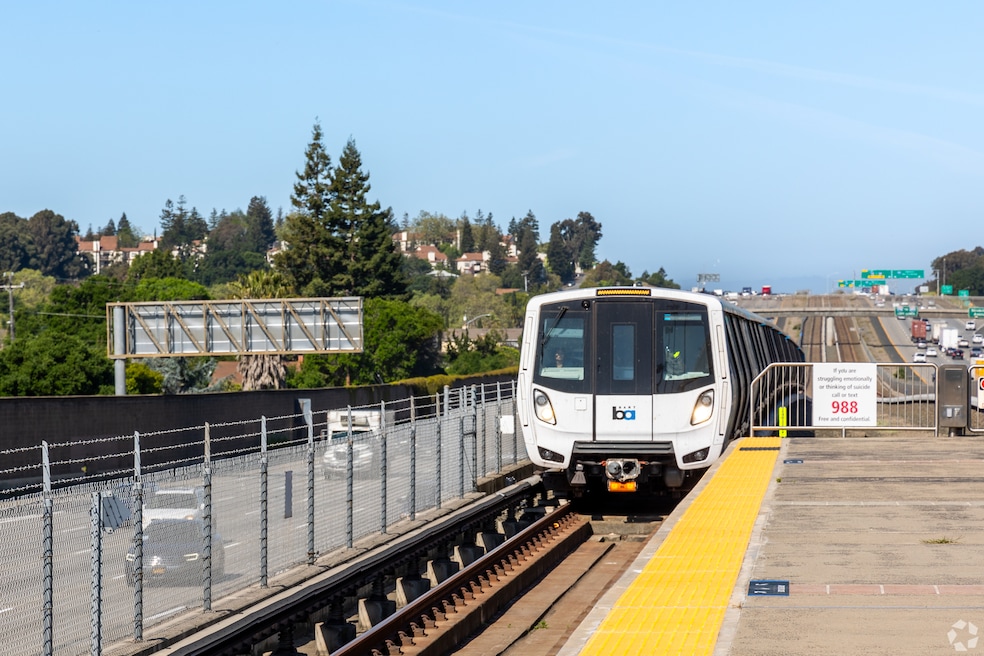A California state senator is pushing a bill that would open property around major city and suburban train stations for new housing development.
Enabling more homes within a half mile of train stops would not only help the state address its housing supply shortfall but also give a boost to financially strapped public transit agencies that own a lot of vacant land near stations, according to bill sponsor Sen. Scott Wiener of San Francisco.
The state needs to build some 180,000 new homes each year to keep up with demand, but fewer than 80,000 homes have been built each year over the past decade, according to the California Department of Housing and Community Development. Transportation experts see building homes around train stations as a good way to address some of the housing needs, not just in California but in other states.
Senate Bill 79 has drawn support from housing and transit advocates but opposition from some city governments, who say the bill will take away their control over what can be built near stations. Affordable housing proponents are concerned that developers will build pricey market-rate homes near stations but little housing targeted at people with lower incomes.
“I think we should do less handwringing and micromanaging about what kind of housing people build, and just let people build housing. That's how we solve our housing shortage,” Wiener told the state Senate Housing Committee at a hearing last month.
It’s been a busy session thus far for housing issues in the California legislature. Another bill drawing attention would enable residential development within existing built-up areas to evade the state’s environmental quality law. Housing advocates blame the law for stifling development, while the law’s defenders say it has protected neighborhoods from inappropriate projects.
New height limits for multifamily buildings
Wiener’s bill would override local zoning laws to set new limits near transit stops on how tall an apartment or condo building can be and how many homes are allowed per acre. Within a quarter-mile of Amtrak or high-frequency commuter rail stations, buildings could be up to 95 feet tall, with as many as 160 homes per acre. Between a quarter mile and a half mile away, somewhat lower limits would apply. Another set of height and density standards would regulate development near light rail or bus rapid transit lines, and a third tier for less busy commuter rail stops or ferries.
It's not clear which levels of development would apply where, although it would likely affect stations in the Los Angeles, San Francisco, Sacramento and San Diego areas, according to an analysis by Senate staff.
The bill would give transit agencies authority over how to develop land they own near stations, without regard for local needs or environmental concerns, the League of California Cities told Wiener in an April 24 letter opposing the legislation.
It’s not true that local governments would entirely lose their ability to regulate housing around train stations, Wiener said. They could write new rules that comply with the state’s height and density limits, but require development to be located primarily on just one side of a station, for instance.
A big concern for skeptics of Wiener’s bill in the state senate is that there is no requirement for housing around train stops to be affordable, which typically means it’s priced for people making no more than 80% of the area median income. Under current law, transit agencies have to give affordable housing developers a chance to acquire vacant land, according to the Senate analysis.
“My concern is that it would open the door for more market-rate [housing], but at the expense of affordable housing. And that's a very big concern,” housing committee member Maria Elena Durazo said at the hearing.
Developers who want to build on transit sites will usually be subject to local inclusionary zoning rules, which typically require at least 10% of apartment or condo projects to be priced affordably, Erik Mebust, a spokesperson for Wiener, said in an interview.
Most of the cities likely to be affected by the bill have such rules, he said, but they haven’t been used near transit stations because much of the land in these areas is zoned to allow only single-family homes.
“Opening up more communities to housing will ensure more affordable housing is built,” Mebust said.
The bill won approval from two Senate committees in late April and is now before the Senate Appropriations Committee. If it moves forward, the full Senate would have until June to decide whether to send it to the state Assembly for consideration.

